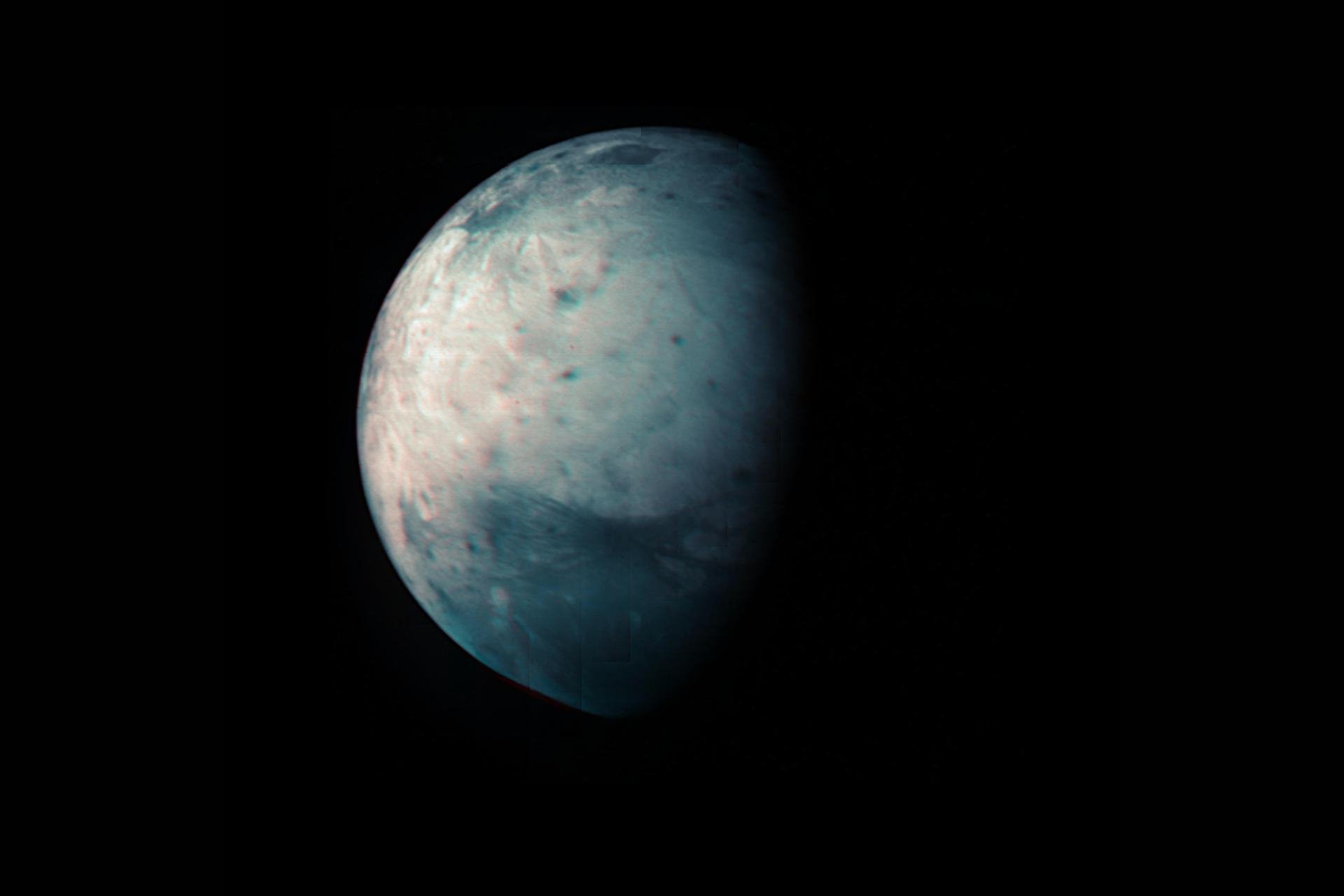A physicist from the University of Maryland has unveiled an ambitious proposal to turn Ganymede, the largest moon of Jupiter, into a gigantic dark matter detector. This innovative idea stems from the belief that larger detectors increase the likelihood of discovering elusive dark matter, which is thought to make up approximately 85% of the universe’s mass. Despite considerable evidence suggesting its existence, dark matter remains largely undetectable, as it does not interact with light and has minimal interaction with ordinary matter.
In a preprint shared on arXiv, William DeRocco posits that the craters on Ganymede could potentially harbor signs of dark matter particles. Spacecraft missions, such as NASA’s Europa Clipper and the European Space Agency’s JUICE, may soon have the opportunity to investigate these possibilities. DeRocco’s paper suggests that substantial dark matter particles could have impacted Ganymede’s icy surface, resulting in deep and broad depressions.
Unlike the smaller dark matter candidates typically sought by ground-based detectors, these proposed particles would be significantly larger. They could create what DeRocco refers to as “dark matter craters,” which would consist of unique minerals pushed to the surface from the moon’s subsurface oceans. In an interview with New Scientist, DeRocco elaborated on how ground-penetrating radar could potentially reveal the structure of these craters. He stated, “You might be able to see this column of melted ice going all the way down through the ice.”
The investigation of Ganymede’s surface through this lens could yield new insights into cosmic dark matter. Bradley Kavanaugh, an astrophysicist at the University of Cantabria in Spain, expressed optimism about the proposal, highlighting its potential despite the ongoing uncertainty surrounding the existence of such large dark matter particles.
While the idea may initially sound far-fetched, it is essential to acknowledge that the exploration of complex physics often necessitates bold and unconventional hypotheses. Although there is no concrete evidence to support the existence of these heavy dark matter particles, there is also a lack of evidence to dismiss the proposal outright.
The next steps will depend on whether NASA or the European Space Agency chooses to adopt DeRocco’s concept. If they do, the scientific community will await the results eagerly to see if Ganymede’s surface truly contains the unique characteristics associated with dark matter craters. As researchers continue to pursue answers to the mysteries of the universe, proposals like DeRocco’s highlight the innovative spirit of scientific inquiry.
